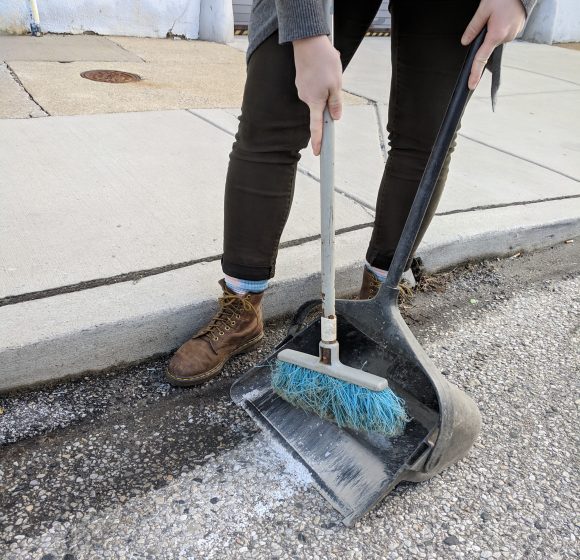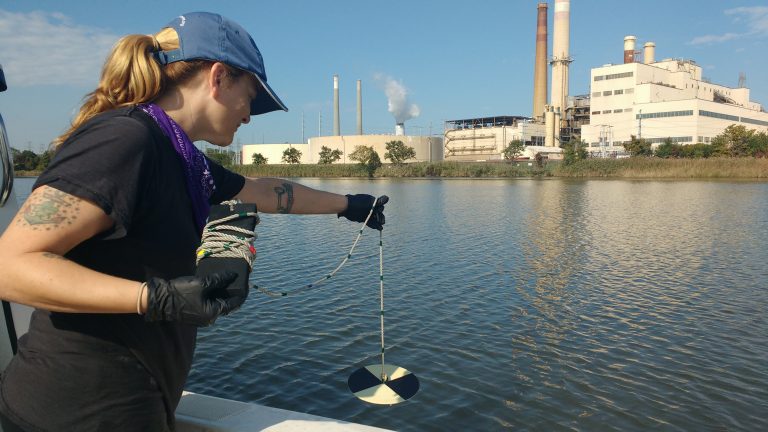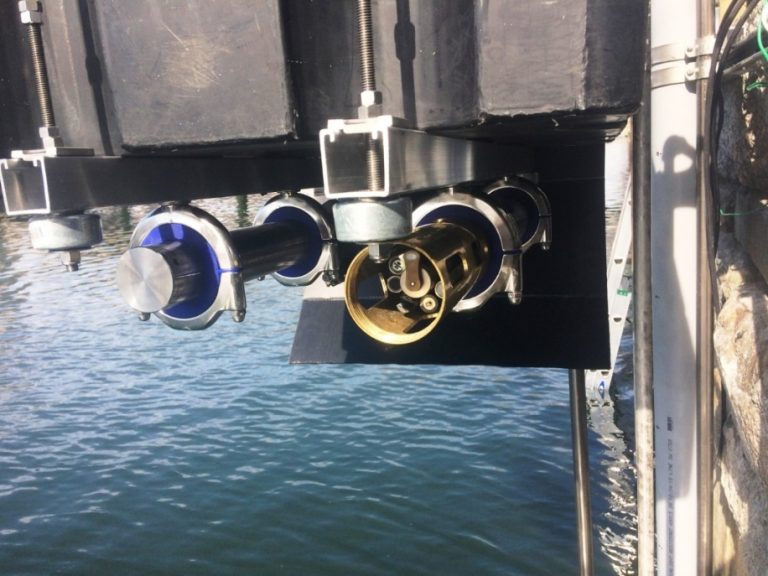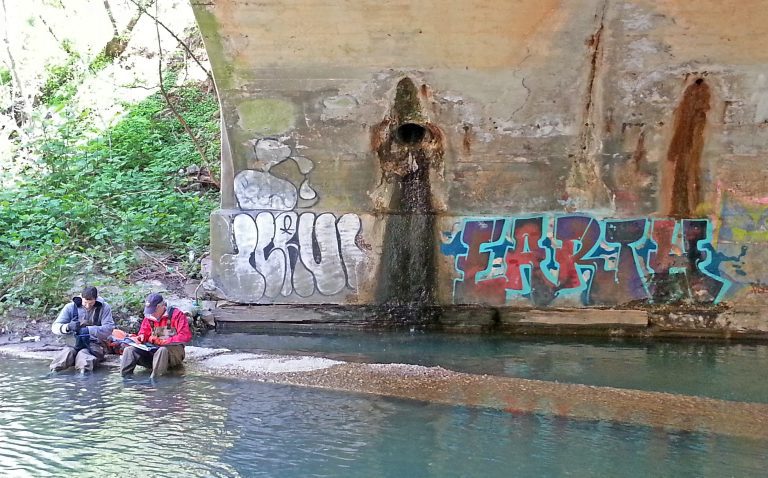Bay-Friendly Tips for Snowy Days
Even after a snow storm, pollution monitoring must go on! In fact, pollution monitoring must go on, especially after a snow storm!
When it snows, a massive amount of salt (sodium chloride) is applied to our roads. While the salt makes roads safer for driving, it wreaks havoc on our waterways. Salt can be toxic to many aquatic species, including insects, amphibians, fish, and macro-invertebrates. While the aquatic life sensitive to salt levels is threatened, other invasive and salt-tolerant aquatic life flourishes, threatening the balance of the ecosystem. Salt also causes toxic metals to be released from sediment, resulting in decreased levels of dissolved oxygen and nutrients.
The change of soil composition due to salts causes plant life on stream banks to die off, which affects soil stability and causes erosion. Additionally, the soil becomes less pervious and less fertile, resulting in increased sediment entering our waterways.

Our team measures “specific conductivity” to determine when there’s a lot of salt in our freshwater streams. A “specific conductivity” test measures the water’s ability to conduct electricity as the ions in salt increase the conductivity of the water. A normal conductivity level is 150-500 uS/cm, and samples following snow events this winter have read up to 8,000 uS/cm — which is quite a massive jump! These levels are way too high and are being observed year after year.
Here’s some simple tips for how you can reduce your salt use this winter:
- Shovel, shovel, shovel. The less snow and ice in your path, the less salt you will need to put down.
- Do not apply salt at temperatures less than 15˚ — it will not melt the ice at such low temps.
- Use less than 4 pounds (approx. 4 large coffee cups) of salt per 1,000 square feet (approx. 6.5 parking spaces).
- Avoid sodium chloride. While it is best to use sand or sawdust to add traction and avoid road salts altogether, if you do buy de-icer, make sure it does not contain sodium chloride.
- When the snow melts, sweep up any left over salt. If you don’t, water will pick it up and carry it to a stream through our storm drain system.

Thank you for helping us restore our urban waterways!
All photos by Sarah Holter






